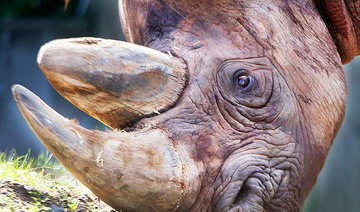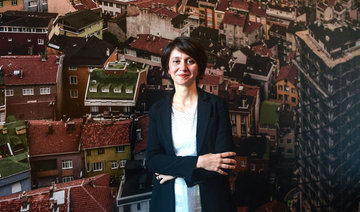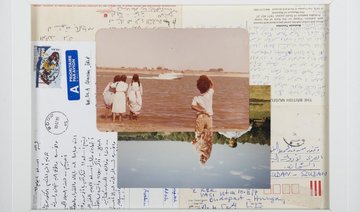LONDON: When David Bennett, worldwide chairman of the International Jewelry Division at Sotheby’s, reflects on some of his career highlights, it is easy to understand the fascination that surrounds great jewels. Aside from the intrinsic beauty of the stones and settings, exceptional jewels are often connected with great human stories of love and passion.
Who could fail to be moved by the love story of the UK’s Edward VIII and Wallis, the duchess of Windsor. He gave up his throne because he could not envisage life without his love by his side and the rest was history.
Bennett saw first-hand the evidence of their love for each other when he personally handled the jewelry collection of the duchess after her death in Paris in 1986.
In his capacity as head of the jewelry department, he set off for Paris with colleague Nicholas Rayner to inspect the collection held in the vaults of the Banque de France on rue Croix des Petits Champs near the Palais Royal.
One-by-one as they opened the boxes, the magnificent jewels emerged — pieces that resonated with the history of the pair whose chosen path saw them exiled from England and the king cut off from his kingdom.
Bennett, who had responsibility for cataloguing the collection, was amazed to discover some private details previously unknown and undocumented.
“At that point, no one had recorded that the duke and duchess had commissioned facsimiles of their writing on the jewelry. The inscriptions were not of the routine kind — such as ‘Christmas 1943’ — they were, instead, love messages that had to be deciphered in double quick time in order to be included in the catalogue that I compiled,” he recalled.
A diamond dress suite made by Cartier in 1935 was engraved with the initials W and E and the inscription “Hold Tight” — a phrase used by the duke and duchess in their correspondence during the abdication crisis.
Bennett noted an evolution in the style of the jewelry worn by the duchess before and after her marriage.
“The pieces before the marriage reflected the duke’s taste, for example, the emerald bracelet and the engagement ring in its original setting. They are more traditional, very high quality, very fine architectonic Art Deco jewels of the period 1935 or 1936.
“Then, after the marriage, the pieces became much more ground-breaking. Pieces like ‘The Flamingo’ — nothing had been created in jewelry like that before. She also started wearing the jewels differently. You can see the photographs of her in the 1940s when they were leaving Britain on the deck of the ship. She is wearing a sheer, long black dress with just a brooch. That was new. Normally, when you look at photographs from the era, for example those taken by Cecil Beaton, women are dressed covered in all sorts of jewelry with many bracelets worn at the same time.
“The duchess came along and used her dress as a frame for the jewels: The brooch worn high on the shoulder as a statement piece.
“Everybody began to follow the duchess — she was the original style icon of the 20th century.”
Other fascinating personalities that Bennett has worked with include Ava Gardner, Gina Lollobrigida and Lily Marinho.
He has special memories of each celebrated woman.
“I thought Ava Gardner was an absolutely lovely woman. I spent four afternoons with her discussing her jewelry. Each piece of jewelry would remind her of special people and times in her life, because jewelry is so personal it brings up a huge number of stories.
“Gina Lollobrigida was a great lady, an actress — a goddess in the 1950s — sculptor and photographer. I had been going to visit her for about ten years when suddenly she said: “Oh — by the way I think I will be selling my jewelry collection.
“She knew a great deal of the history of her pieces — she had a pair of pearl and diamond drop earrings that had belonged to the Habsburg family.
“Sotheby’s also handled the collection of the ‘uncrowned queen of Brazil’ the arts patron, philanthropist and socialite, Lily Marinho. That involved about four trips to Rio — to her amazing house with flamingos in the garden. We talked and talked for hours about her life. Apparently, I reminded her of her father who was English. She told me about aspects of South American history that I knew nothing about.”
Bennett is passionate and highly knowledgeable about jewelry in all its aspects, but as a young man he had wanted to become a film director. In his final year at university, where he studied philosophy, he confided this plan in his father who took a dim view of the prospect of his son forging a career in Hollywood. He persuaded him to take up an apprenticeship at Sotheby’s and when an opening came up in the jewelry department — with the country in the throes of recession — he took the opportunity.
He is celebrated in the industry as the auctioneer who has presided over the sale of four out of the five most expensive jewels in auction history, but for Bennett the money, while important, is not the driver behind his passion for jewels. That goes much deeper.
“I look at jewelry as an art form,” he explained.
“I am passionate about gemstones as essences of the planet. The great gemstone nations are India, Sri Lanka and Burma. The Indian subcontinent has a wonderful, unique relationship with gemstones because it is part of the Vedic tradition. The connection between gemstones and planets, which I have studied in depth in the Western tradition, has its foundations in India 4,000 years ago. The great guardians of the symbolism of gemstones are found in the Jain religion. It fascinates me as I have been interested in astrology since university.
One particular gem is held as supreme in its beauty in the eyes of Bennett.
This is “The Sunrise Ruby’,” named after a poem of the same name, written by the 13th century Sufi poet, Rumi. The ruby sold for a record $30.42 million in 2015 at a Sotheby’s auction in Geneva to an anonymous buyer.
“When the client showed it to me for the first time I was speechless for a full 20 minutes as I was so absorbed in gazing at it in different lights,” Bennett said.
“It is fascinating to me that this has come out of the rock. It is a treasure within the rock and somehow we must find that treasure within ourselves,” he added.
Bennett is constantly traveling and frequently visits the Gulf.
“It is a pleasure for me to go as I am very fond of the Arab world. I love the culture. From the mid 1970s to the late 1990s, Saudi Arabia accounted for, by far, the lion’s share of jewelry buying in the world. There are wonderful collections in KSA and other GCC countries, such as Kuwait, but I cannot name clients as we have to respect the desire for anonymity,” he said.
He has seen a great upsurge in interest in jewelry over his career and has contributed to widening the appreciation of jewels through his publications.
“When I joined Sotheby’s in the mid-1970s, there wasn’t a great interest in jewelry. Then by the mid-1980s jewelry had become of great interest, but there wasn’t a lot of information readily to hand. That’s why my colleague Daniela Mascetti and I published our first book, ‘Understanding Jewelry’,” he explained.
This ground breaking work, which has been translated into many languages, became a huge, sell-out success with sales estimated to be in the region of $4-5 million.
As he sets off to take yet another plane he admits that traveling today is a bit of a chore, but this negative is far outweighed by the knowledge that at the journey’s end could be waiting another unique and magnificent jewel.
Inside the glittering world of history’s most famous jewels
Inside the glittering world of history’s most famous jewels
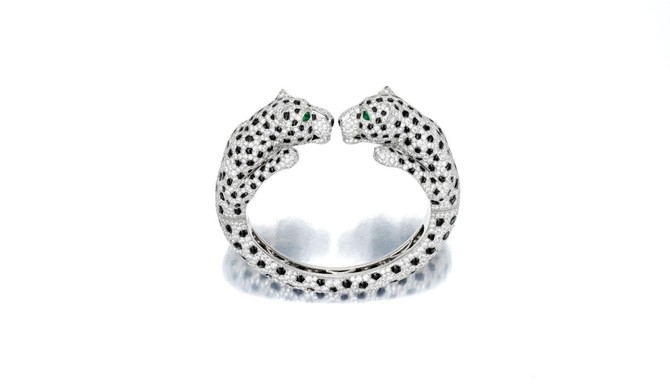
Simi and Haze Khadra discuss the functional vision of their beauty brand and its Middle East launch
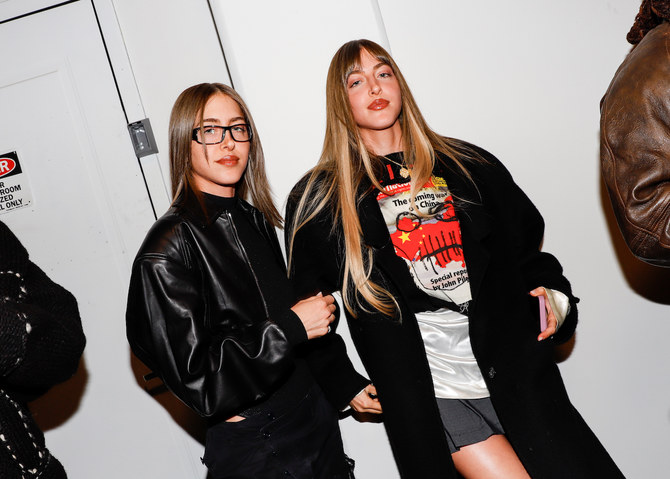
DUBAI: US-Palestinian beauty entrepreneurs Simi and Haze Khadra this week went on tour in the Middle East to launch their brand, SimiHaze Beauty, in the region. Their travels included stops in Saudi Arabia and the UAE.
While in the region, the sister duo — raised by Palestinian parents between Riyadh, London and Dubai — shared insights about their brand with Arab News.
The 31-year-old identical twins, who are also DJs, said that they initially launched the brand out of “pure functionality,” creating products they wanted and needed in their own makeup routines.
Every product they develop undergoes the same rigorous process of ensuring functionality, they said.
“We are constantly thinking of new ideas and ways to make makeup easy and fun to apply,” Simi told Arab News.
The pair launched their US-born cosmetics brand in 2021 with a range of stick-on makeup designs that can be placed on the face for a bold beauty look achievable within seconds.
The sticker book features an array of edgy designs inspired by their favorite DJ looks from the past, such as chrome wings, neon negative space eyeliner and holographic cat-eyes.
SimiHaze Beauty then expanded to include a range of products, such as lipsticks, bronzing powders, and a lifting mascara.
Simi and Haze believe they were “actually late bloomers to the beauty world.”
“We only started becoming interested in it when we were around 18,” Haze said. “We started SHB from just a single product we wanted but couldn’t find in the market, which is our Velvet Blur lipstick.
“We loved a matte lip for every day at the time but couldn’t find one that wasn’t drying, so we created it.”
The twins developed an interest in eye makeup when they began DJ-ing.
“We weren’t the best at applying eyeliner, so again we just created our perfect solution which became the eye stickers,” Haze said.
To the sisters, launching the brand in the Middle East “felt so surreal.”
“The market has been such a huge goal of ours since we started because we grew up here,” Simi said. “We’re so happy that our products are finally accessible to our amazing followers here, because they have been such huge supporters since the beginning.
“Now people are finally able to really see and touch and feel the products, which is so important to us because you will never get the experience and vision of SHB unless you actually hold the product and feel the texture, curves, and ergonomics of it. The online experience doesn’t do it any justice.”
The sisters said that they personally oversee the development of every product. They visit their lab in Italy for a few days at least twice a year to test and create new formulas.
“It takes a while and a lot of back and forth because after we create something it gets tested on our whole family from my grandma to my mom to my little sister and also all my friends with different skin tones,” Simi said.
“My friends are used to me calling them and saying: ‘Hi can I come over and try on some blush colors on you?’ So by the end of it we know what formulas and shades work best on the widest range of people.”
While visiting the Middle East, the sisters observed a prevailing trend in the region: skincare.
“I’ve seen so much good skin here and I can tell people really care about skincare here,” Haze said.
“We’ve also been increasingly obsessed with it. Our products are all infused with skin-loving ingredients, because we’re personally super-paranoid about anything that’s clogging or could cause irritation.”
Loli Bahia, Arab models walk Chanel cruise show in France
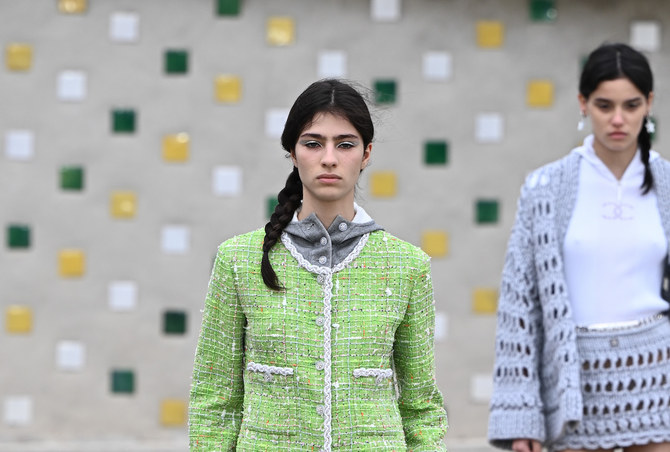
DUBAI: French Algerian model Loli Bahia, British Moroccan Nora Attal, and part-Saudi Amira Al-Zuhair took to the runway at the Chanel Cruise 2024/2025 show in Marseille, France.
Bahia donned a green ensemble, composed of a knee-length pencil skirt paired with a matching top, layered over a white shirt boasting a hoodie collar.
Attal graced the runway in a white summery dress adorned with delicate sheer geometric prints, complemented by white slippers.
Her look also featured beach-inspired layered necklaces, a thin chain belt and chunky bracelets adorned with hat, ship anchors and Chanel logo pendants.
Meanwhile, Al-Zuhair sported a vibrant yellow ensemble featuring hot shorts paired with a button-down top and a coordinating cardigan.
She also wore a beige hat, a gold choker embellished with blue detailing, chunky earrings and a chain belt adorned with pendants.
From intricate embroideries to dazzling sequined jackets and swimwear, Creative Director Virginie Viard’s latest collection showcased ensembles inspired by an underwater reverie.
The outfits included knee-length Bermuda shorts, high-waisted shorts, loose trapeze dresses, and large outerwear. Viard also demonstrated the power of layering, using shirt collars, French cuffs and jackets in unexpected ways throughout the collection.
Earlier this week, Chanel shared a series of images, captured by British photographer Jamie Hawkesworth, on Instagram featuring Bahia. The pictures, drawing inspiration from the seaside and scuba diving, provided an initial preview of Viard’s collection.
Bahia showcased multiple ensembles from the collection in the photographs. In the first shot, she dazzled in a glitzy black sequined mini pencil skirt and blazer. Another image captured her wearing the green ensemble seen on the runway, with the hoodie of the white shirt covering her head.
Additionally, she was photographed donning a white one-piece swimsuit adorned with a black bow around the chest.
The photo series also featured Bahia in a variety of other outfits, including a vibrant white dress with colorful square-like designs, tailored shorts paired with a blazer, as well as a striped set featuring a full-length skirt and matching top.
Saudi Arabia announces Red Sea Fashion Week
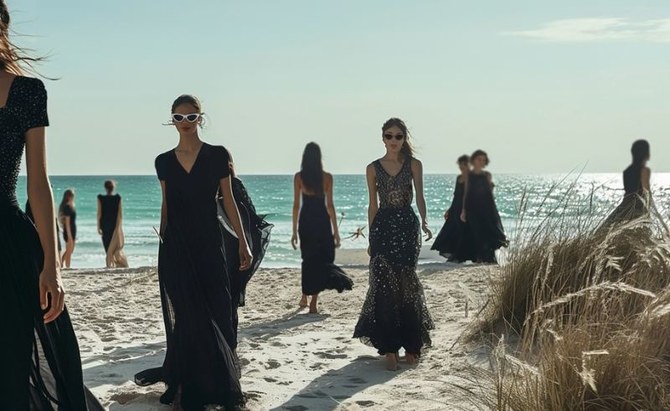
DUBAI: The Kingdom is all set to host the inaugural Red Sea Fashion Week. Set against the waters of Ummahat Island, the glitzy event is scheduled to take place from May 16-18 at The St. Regis Red Sea Resort.
Red Sea Fashion Week, which is organized by the Saudi Fashion Commission, will showcase local and international designers. It aims to celebrate the fusion of traditional Saudi aesthetics with cutting-edge contemporary design.
Among the highlights will be the participation of Saudi 100 Brands, an initiative spearheaded by the Fashion Commission to support and promote emerging local talent.
Saudi Arabia played host to its first fashion week in 2023, in Riyadh. The event took place in the King Abdullah Financial District from Oct. 20-23 and set the stage for a new fashion capital in the Middle East.
Bella Hadid launches Orebella fragrances
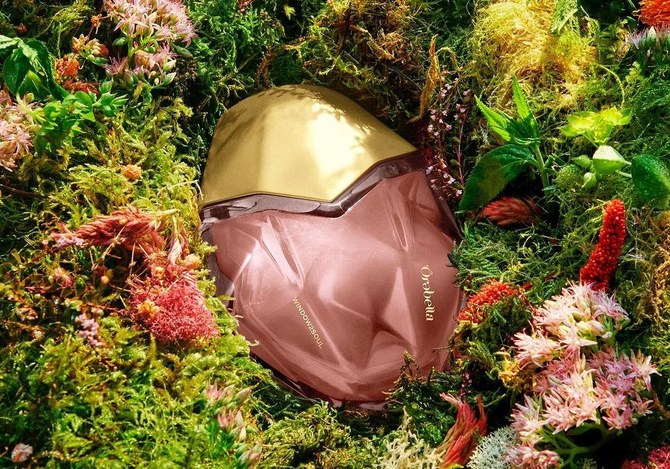
DUBAI: American fashion model Bella Hadid has launched a range of fragrances under her beauty brand, Orebella.
The entrepreneur, of Dutch and Palestinian descent, posted pictures of herself alongside the products — Salted Muse, Blooming Fire and Window2Soul — on Instagram.
The fragrances are available in 10, 50 and 100 mL bottles.
Hadid described them as “hydrating, alcohol-free and enriched with essential oils.”
According to reports, the Salted Muse fragrance has top notes of sea salt, pink pepper and carbon dioxide extract, heart notes of olive tree accord, fig and lavender, and base notes of cedarwood, sandalwood and amber.
Blooming Fire has bergamot, cedarwood, clove leaf and cardamom, followed by Tahitian monoi and jasmine and finishes with patchouli.
Window2Soul has a blend of lemon, geranium and mint in its top notes, transitions to jasmine and damask rose and ends with a base of tonka bean.
“For me, fragrance has always been at the center of my life, helping me feel in charge of who I am and my surroundings,” Hadid said on her website.
“From my home to nostalgic memories, to my own energy and connection with others, scent has been an outlet for me. It made me feel safe in my own world.
“Through my healing journey, I found that I was extremely sensitive to the alcohol in traditional perfumes, both physically and mentally, it became something that was more overwhelming than calming to me.
“That is the main reason I wanted to find an alternative, so essential oils became an artistic and experimental process for me.”
Hadid said she started growing lavender on her farm and learned about her family’s tradition of making scents.
“I realized I might have a calling in this. I found healing, joy and love within nature’s scents.
“This is why I am so proud of Orebella. It was truly a dream and a passion that through the universe and authentic dedication was able to become this brand.”
Riyadh-based soap-maker Mayssam Tamim’s compelling chemistry of Saudi fragrances and flavors
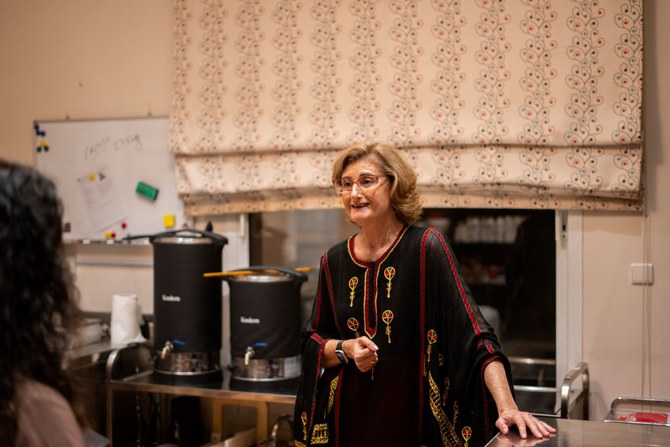
- Businesswoman uses locally-sourced ingredients, no chemicals
- Olive oil, camel milk, honey, dates, Zamzam water key materials
RIYADH: Mayssam Tamim has had a passion for handmade soaps from a young age, and as an adult would search the globe for such products.
She discovered various products in several cities including Tripoli’s eco-friendly creations at Khan Al-Saboun and Provence’s boutique lavender offerings.

In 2018, she decided to set up her own company, the Riyadh-based Mayassem, that produces luxury handmade soaps from Saudi Arabia-sourced natural ingredients.
She told Arab News: “My hope is these soaps, at least a few of the ones that become traditional, are going to help establish something in Saudi Arabia that is considered pure to the region. It doesn’t have to be just my brand of soap, but it can be an industry that is localized.
“We’re doing everything new in Saudi Arabia. Why not this?”

Her products have no harmful chemicals and are handcrafted at her home atelier using sustainable, organic ingredients to ensure that they are gentle on the skin. The materials are locally sourced including extra-virgin olive oil from Al-Jouf, camel milk from Janadriyah, honey from Baha, and dates from Qassim.
She considers the soaps mini canvases, each splashed with a unique blend of non-toxic coloring inspired by their ingredients. The “Bliss” bar for example, made with Zamzam water and lavender fragrance, is crafted to resemble the Kaaba. The “Tamr” bar reflects the palette of the Saudi Arabia landscape as it features oud, saffron and turmeric fragrance, date paste, and camel milk.
“I know it’s a soap and not a painting but sometimes it is a feeling in me. I was very sad at the loss of a cousin, Rana, which in Arabic means song. So for one of my soaps, I decided to go with blue colors and called it ‘Celestial Melody.’ Sometimes it’s just things that simple,” the artisan said.
The soaps come in floral, fruity, woody, citrus, or unscented options. While their main categories are classic, seasonal and signature, she also crafts limited-edition soaps, including an 18-box drop featuring bars encrusted with crystals such as lapis lazuli and black onyx. The brand also offers hand-poured candles made with natural soy, coconut and beeswax, as well as hand cream.
“People can buy soap 10 times cheaper at the supermarket. If I’m not offering them something that adds to the moisturization, that is organic, that does not harm them, and remains beautiful as long as they’re using it, I might as well not start at all,” she said.

With her background in biology, the chemistry of soap-making came naturally to her. She began experimenting, with aesthetics and organic products in mind, over a couple of years until she began testing her final product on family and friends.
After retiring from the UN Development Program, Mayassem began investing her time in her business. Her products have been featured in shops at Jeddah’s Islamic Arts Biennale and Diriyah’s Contemporary Arts Biennale, various homegrown market locations, and pop-up stores.
“I think I’m living the best years of my life because I’m thoroughly working on something that I’m enjoying tremendously. Not to say that I did not enjoy my career. I was very happy with the work I did, but it was time to start a new chapter in my life,” she said.
While artisans have been embedded in local culture for ages, the brand aims to call attention to their value by keeping the business hand-crafted and artisanal in line with its ethos. “I don’t want it to become a job. I want it to stay a passion,” she said. “Artisans, whether they’re making soap, embroidery, or painting, bring out the value in a country. And we have different regions, so it also brings out the identity of a country.”





